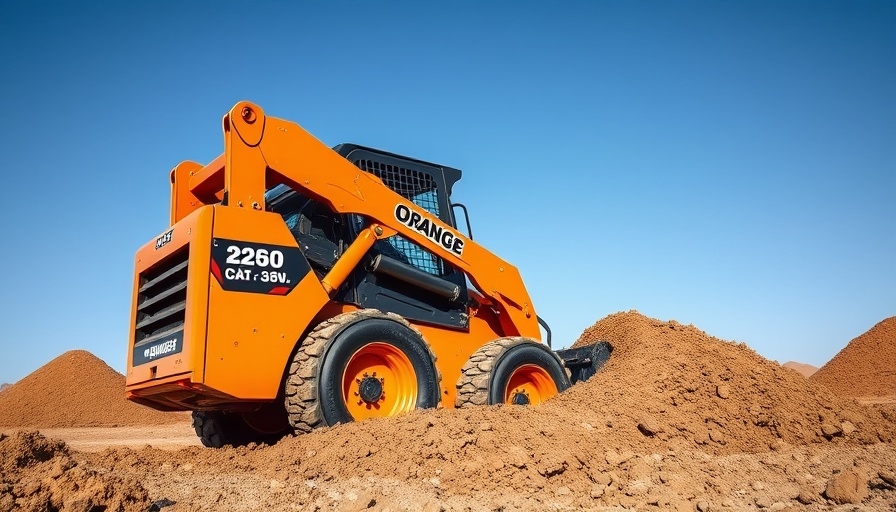
Case Construction Equipment's Bold New Step
In a decisive move to enhance safety, efficiency, and user experience, Case Construction Equipment (Case CE) has upgraded its B Series compact track loaders (CTLs) and skid steers. These updates, unveiled at the World of Concrete 2020 and expanded upon at the 2021 Utility Expo, signify the company's commitment to delivering cutting-edge equipment tailored for modern operators and job sites.
Redefining Operator Safety with Innovative Features
One of the standout improvements is the introduction of a rear object detection system. By utilizing radar technology, this feature significantly boosts operator and jobsite safety by alerting them to potential hazards lurking behind the machine. When an obstacle is detected, an audible alarm paired with warning lights activates, with the alarm getting progressively aggressive as the operator inches closer to the hazard. Additionally, a color-coded visual system—transitioning from green to red—provides an intuitive method for operators to gauge their proximity to potential dangers.
Enhancements in Operation and Usability
Case CE has also prioritized usability in its updates. The new bidirectional self-leveling feature ensures that operators can keep the bucket or fork level during movement, thus simplifying the operation of attachments. This not only saves time, but also contributes to more precise work, a crucial advantage on busy job sites.
Further enhancing functionality, operators now have access to an attachment display that includes hydraulic installation instructions and operating control information tailored to the specific attachment chosen. This feature streamlines the workflow, allowing users to maximize their productivity without needing to rely on additional resources to understand equipment usage.
Embracing Connectivity and Modern Technology
In today’s data-driven landscape, connectivity is key. Case CE incorporates advanced Processing and Connectivity Modules (P&CM) and connectivity module (CM1X) to offer precise GPS data and improved SiteWatch telematics, thus allowing operators to track usage and maintenance needs effectively. The inclusion of a state-of-the-art modem enables remote service tools and over-the-air firmware updates, alleviating the need for frequent trips to a dealer for service updates.
Expanded Lineup to Meet Diverse Needs
The new B Series lineup, consisting of eight skid steers and five compact track loaders, not only mirrors the model offerings found in their Alpha Series but also brings forth the industry’s largest CTL, the 16,100-pound TV620B.
This expansion points to Case CE's awareness of various operator needs, making their loaders versatile enough for different applications—be it heavy-duty construction or more delicate tasks requiring precision.
The Path Ahead for Case CE
The enhancements made to the B Series are not just technical upgrades; they represent a shift in how construction equipment can empower operators in a rapidly evolving environment. As safety, efficiency, and ease of use remain paramount in equipment design, Case CE is poised to lead the way in redefining operator experiences across the industry.
With software that is not backward compatible with older models, current owners may need to consider these upgrades seriously, as the B Series signifies not just an evolution in equipment but a new standard for future operations on job sites.
Call to Action: Stay Updated
To ensure that your operations stay ahead in safety and efficiency, keep an eye on the latest developments from Case CE. Understanding how these technological advancements can affect your work can make a significant difference in productivity and safety on your next job site.
As the industry progresses, being informed about the best equipment choices can empower contractors and operators alike to achieve new heights in their projects and business operations.
 Add Row
Add Row  Add
Add 




Write A Comment